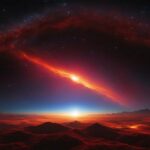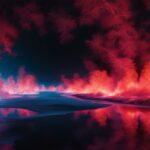Last Updated on 6 months by Francis
If you’ve ever wondered why infrared observations are so difficult, you’re not alone. Despite its numerous scientific applications, observing at infrared wavelengths can pose significant challenges. From limitations in detecting and capturing infrared radiation to technical and atmospheric obstacles, there are a multitude of factors that contribute to the difficulties scientists face in studying the infrared spectrum.
But why is it so challenging to observe at infrared wavelengths? In this section, we’ll explore the various obstacles and limitations that make it difficult to detect and study infrared radiation.
Contents
Key Takeaways:
- Observing at infrared wavelengths poses significant challenges due to limitations in detecting and capturing infrared radiation.
- Technical and atmospheric obstacles also contribute to the difficulties scientists face in studying the infrared spectrum.
- Understanding the nature of infrared radiation is crucial to grasping the difficulties of observing at infrared wavelengths.
- Space-based observatories have revolutionized infrared astronomy but come with their own set of challenges.
- Advancements in technology have helped overcome some of the obstacles and problems faced in observing at infrared wavelengths.
The Nature of Infrared Radiation

Observing at infrared wavelengths presents unique challenges due to the nature of infrared radiation. Infrared radiation is electromagnetic radiation with wavelengths longer than those of visible light, ranging from 0.78 to 1000 micrometers.
The longer wavelengths of infrared radiation make it difficult to capture and observe using traditional telescopes designed for visible light observations. This is because detecting longer wavelengths requires larger, more sensitive detectors that can capture the low levels of radiation emitted from infrared sources.
In addition, infrared radiation interacts differently with matter than visible light, which can cause problems with infrared observations. For example, infrared radiation can penetrate dust and gas clouds that can obscure visible light sources, allowing astronomers to see inside these regions and study the objects located inside them.
However, this property of infrared radiation can also cause difficulties in capturing infrared radiation, as the radiation may be absorbed or scattered by dust and gas clouds, making it challenging to detect and study objects behind them.
Capturing Infrared Radiation
To capture infrared radiation, telescopes must be equipped with specialized instruments such as infrared detectors. These detectors are designed to absorb and convert the infrared radiation into an electrical signal that can be analyzed and processed by astronomers.
However, the detectors used for infrared observations are often less sensitive than those used for visible light observations, which can make capturing infrared radiation more difficult.
Additionally, thermal radiation emitted from the telescope and its surroundings can create background noise that can interfere with the desired infrared signals. Scientists have developed various methods to minimize this background noise, including cooling the detectors to very low temperatures and shielding them from thermal radiation sources.
Despite these challenges, infrared observations have proven to be an essential tool for studying a wide range of astronomical objects and phenomena, from protostars and planetary systems to distant galaxies and black holes.
“Infrared astronomy has revolutionized our understanding of the universe, revealing new insights into processes occurring in regions that were previously hidden from view.”
Atmospheric Interference
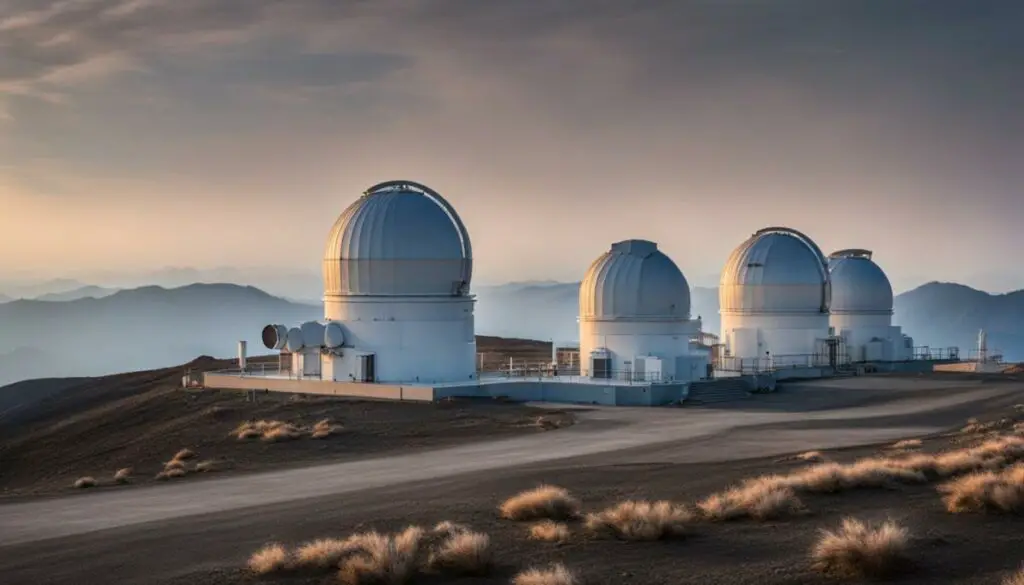
The Earth’s atmosphere poses significant challenges to observing at infrared wavelengths. The primary issue is that water vapor in the atmosphere absorbs a significant amount of infrared radiation, limiting the amount of radiation that reaches the ground-based telescopes. This limitation affects the sensitivity of the detectors and reduces the quality of observations. Additionally, atmospheric turbulence and temperature variations induced by the atmosphere can create wavy distortions in the light path, leading to blurred images and reduced resolution.
Observatories located at high altitudes, such as Mauna Kea Observatory in Hawaii, attempt to mitigate atmospheric interference by placing telescopes above much of the atmosphere. However, even at high altitudes, the atmosphere still affects observations. For instance, the Large Binocular Telescope located on Mount Graham in Arizona, operates two 8.4-meter mirrors to reduce the effects of atmospheric scintillation and turbulence.
Another option to overcome atmospheric interference is to observe from space-based telescopes, where there is no interference from the Earth’s atmosphere. Examples of such telescopes include the Herschel Space Observatory and the Spitzer Space Telescope. However, as noted in the previous section, this approach comes with its own set of challenges.
Comparison Table: Ground-Based vs. Space-Based Infrared Observations
| Factors | Ground-Based Observatories | Space-Based Observatories |
|---|---|---|
| Atmospheric Interference | Significant interference from the Earth’s atmosphere, which limits the quality of observations and reduces sensitivity | No atmospheric interference, providing high-quality observations and excellent sensitivity |
| Resolution | Lower resolution due to atmospheric turbulence and distortions, limiting the accuracy of measurements | Higher resolution, allowing for more precise measurements and detailed observations |
| Field of View | Limited field of view due to the Earth’s rotation and atmospheric distortion | Wide field of view, providing a better overall view of the sky |
| Cost | Relatively low cost due to the use of ground-based telescopes | Higher cost due to the need for complex and expensive space-based observatories |
Despite the limitations of ground-based observatories, astronomers continue to make significant discoveries using them. However, space-based telescopes provide a more accurate and detailed view of the sky, allowing for a better understanding of the universe. Future advancements in technology and instrumentation may help mitigate atmospheric interference, enabling ground-based telescopes to compete with space-based observatories in terms of resolution and sensitivity.
Technical Limitations
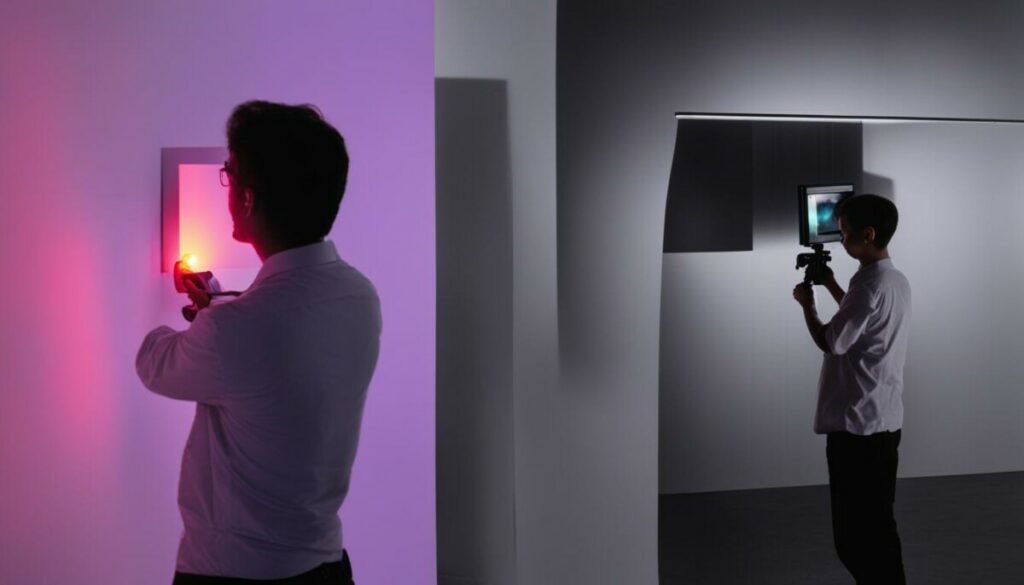
When it comes to observing at infrared wavelengths, technical limitations pose a significant challenge to scientists. These limitations can affect the quality of the data collected, making it difficult to study and analyze infrared radiation.
One of the primary issues in detecting infrared wavelengths is the limited sensitivity of infrared detectors. These detectors often require cooling to very low temperatures, which can be a challenging and costly process. Even with this cooling, the detectors still have a limited range of detection, particularly in the shorter-wavelength infrared region.
Another technical limitation in infrared imaging is the low spatial resolution. Due to the longer wavelengths of infrared radiation, it can be challenging to achieve the same level of resolution as in visible light imaging. This low resolution can make it difficult to distinguish between different objects and features in the image.
Additionally, infrared imaging is often subject to noise, which can degrade the quality of the image. This noise can come from a variety of sources, including fluctuations in detector sensitivity and electrical noise in the imaging system.
Table: Technical Limitations
| Limitations | Challenges |
|---|---|
| Low sensitivity of infrared detectors | Makes it difficult to detect all desired wavelengths |
| Low spatial resolution | Can make it challenging to distinguish between objects and features |
| Noise in imaging system | Can degrade the quality of the image |
“The limited sensitivity of infrared detectors often requires cooling to very low temperatures, which can be a challenging and costly process.”
Overcoming Technical Limitations
Despite these technical limitations, scientists have made significant strides in improving infrared imaging technology. One solution to the low spatial resolution is to use interferometry, which combines signals from multiple telescopes to achieve higher resolution. Advances in detector technology and cooling methods have also improved the sensitivity of infrared detectors.
Data processing techniques have also improved, allowing scientists to correct for noise and other technical limitations. For example, deconvolution algorithms can be used to sharpen images and remove blurring caused by the imaging system.
Overall, while technical limitations present significant challenges in observing at infrared wavelengths, ongoing research and technological developments continue to push the boundaries of what is possible.
Thermal Background Noise

The presence of thermal background noise presents a significant obstacle in observing at infrared wavelengths. This noise arises from the natural emission of infrared radiation from the surrounding environment and objects, leading to interference and difficulties in detecting the desired signals. As a result, scientists must find ways to distinguish the desired infrared wavelengths from this background noise.
Several techniques have been developed to overcome this problem. One such technique is background subtraction, where scientists measure the thermal background signal and subtract it from their observations to isolate the desired infrared radiation.
Another technique is the use of cold shields, which protect the detector from the thermal radiation emitted by the instrument, reducing the background noise level.
Despite these techniques, thermal background noise remains an obstacle in detecting and studying infrared radiation. Its effects can be seen in this infrared image, where the bright spots represent sources of thermal background noise.
Future Developments
Advancements in technology are paving the way for new techniques to tackle the issue of thermal background noise. One promising approach is the use of quantum detectors, which are capable of detecting single infrared photons with high sensitivity. These detectors are not affected by thermal background noise and could revolutionize infrared observations.
Another potential development is the use of superconducting detectors. These detectors operate at very low temperatures and are not sensitive to thermal background noise, providing a high signal-to-noise ratio.
As these technologies continue to evolve, we can expect to see significant improvements in the detection and study of infrared radiation, overcoming the obstacles and issues posed by thermal background noise.
Instrumentation Challenges

Designing and operating instruments for infrared observations pose significant challenges. Infra-red radiation has longer wavelengths than visible light, which makes it difficult to capture using conventional optical instruments. Due to this, specialized infrared telescopes have been developed to collect the radiation and convert it into electrical signals that can be analyzed.
One of the major difficulties in capturing infrared radiation is the sensitivity of the detectors. Infrared detectors need to be cooled to low temperatures to reduce their thermal noise and improve their sensitivity. This cooling process requires specialized equipment and adds complexity to the design of the instruments.
Another issue with infrared observations is the high level of background radiation. This radiation comes from the telescope components, the atmosphere, and other sources. As a result, it is challenging to distinguish between the desired signals and the background noise.
Furthermore, capturing images at infrared wavelengths requires precise calibration of the instruments to ensure accurate and reliable results. Any errors in calibration can lead to distorted images and inaccurate data interpretation.
To overcome these challenges, scientists continue to develop new technologies and techniques. One such approach is adaptive optics, which uses deformable mirrors to correct for the distortions caused by the Earth’s atmosphere. This technology has greatly improved the resolution and accuracy of infrared images.
Instrumentation challenges, alongside technical limitations, pose significant problems for observing at infrared wavelengths. The sensitivity of detectors and high levels of background radiation are major obstacles in capturing accurate images and data.
Data Analysis and Interpretation

Collecting data in infrared observations presents its own set of challenges, but analyzing and interpreting that data is no easy feat either. The limitations and hurdles faced during data analysis are a significant obstacle in studying infrared radiation.
One of the primary difficulties encountered during data analysis is the vast amount of data collected in infrared observations. Scientists must sift through enormous amounts of data to identify the most relevant and meaningful information. Additionally, the complexity of the data obtained in infrared observations requires sophisticated analysis techniques.
Another challenge in data analysis is the presence of noise in the data, which arises due to a variety of factors, including the surrounding environment, instrument limitations, and atmospheric interference. Distinguishing between desired signals and background noise can be a complicated task.
Furthermore, interpreting the data obtained from infrared observations can be tricky. Infrared radiation can reveal unique and fascinating information about celestial objects, but interpreting that information requires a deep understanding of the physics involved.
Despite these challenges, scientists continue to develop innovative data analysis techniques to overcome these obstacles and unlock the secrets of the infrared spectrum.
“Data analysis is the art of extracting meaningful information from data.” – Charles Wheelan
Space-Based Observatories
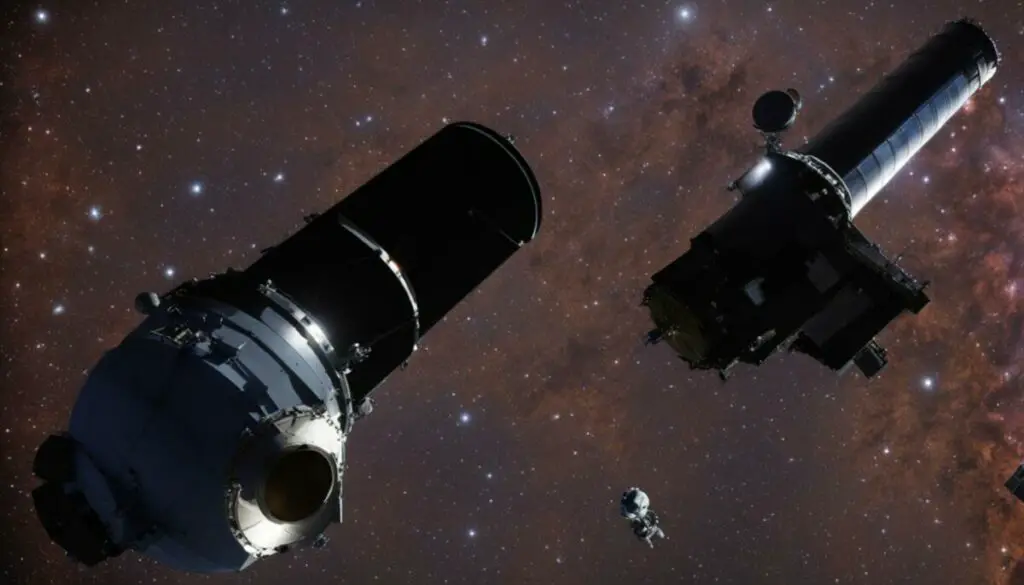
Space-based observatories have been a game-changer in the field of infrared astronomy. Observing at infrared wavelengths from space offers numerous benefits over ground-based observations. However, it comes with its own set of challenges that must be overcome.
One of the biggest advantages of space-based observations is the lack of interference from Earth’s atmosphere. The atmosphere absorbs and scatters much of the infrared radiation, making it difficult to detect and study. In space, telescopes can detect and collect infrared radiation with greater clarity and precision.
The Herschel Space Observatory is an excellent example of a space-based observatory that has advanced our understanding of the universe at infrared wavelengths. Launched in 2009, it was the largest infrared telescope ever placed in space, with a primary mirror measuring 3.5 meters in diameter. Its advanced instruments allowed scientists to study the early universe, star formation, and the structure of galaxies in unprecedented detail.
However, operating and maintaining space-based observatories is a significant challenge. The instruments and telescopes have to operate in extreme conditions, including extreme temperatures, radiation, and vacuum. Any damage or malfunction can be catastrophic and result in the loss of valuable data.
Furthermore, launching a space-based observatory is a complex and expensive undertaking. The cost of designing, building, and launching an observatory can run into billions of dollars. The James Webb Space Telescope, set to launch in 2021, is one such example. It is one of the most complex telescopes ever built, with a primary mirror measuring 6.5 meters in diameter.
| Pros | Cons |
|---|---|
| Clearer and more precise infrared observations | Expensive to build and launch |
| No interference from Earth’s atmosphere | Challenging to operate and maintain |
| Advanced instruments and telescopes | Loss of data in case of damage or malfunction |
Despite the challenges, space-based observations continue to push the boundaries of our understanding of the universe at infrared wavelengths. They offer a unique perspective that cannot be achieved with ground-based observatories.
The Benefits of Space-Based Observations
- Clearer and more precise observations
- No interference from Earth’s atmosphere
- Advanced instruments and telescopes
- Unique perspective
Space-based observatories have provided us with a wealth of knowledge about the universe at infrared wavelengths. They have enabled us to study the early universe, star formation, and the structure of galaxies in unprecedented detail. As technology continues to evolve, we can expect even more breakthroughs in the field of infrared astronomy.
Technological Advances
Despite the numerous obstacles in observing at infrared wavelengths, technology has continued to advance and push the boundaries of what is possible. Innovative solutions and breakthrough technologies have helped to overcome the problems encountered in observing at infrared wavelengths.
One significant advancement has been the development of new detectors that are more sensitive to infrared radiation. These detectors have allowed scientists to capture more detailed and accurate images of objects in the infrared spectrum, providing unprecedented insights into the universe.
“With the latest infrared detectors, we are able to see objects that were once hidden from view, revealing new insights into the nature of our universe.”
Another advance comes in the form of adaptive optics, which reduces the effects of atmospheric interference. Adaptive optics uses deformable mirrors to correct for distortions caused by the Earth’s atmosphere, producing sharper and clearer images.
Furthermore, the use of space-based observatories has greatly enhanced our ability to observe at infrared wavelengths. Observatories like the Spitzer Space Telescope and the Herschel Space Observatory have provided a unique perspective on the universe and revealed new findings that were impossible to detect from Earth.
These technological advancements have not only improved our ability to detect and study infrared radiation, but they have also led to new discoveries and a deeper understanding of the universe. However, despite these advances, there are still many challenges and limitations in observing at infrared wavelengths that require further innovation and development.
Future Prospects
Despite the challenges with observing in the infrared spectrum, technological advancements offer promising opportunities for the future of infrared imaging. From the use of new materials to improve detector sensitivity to the development of sophisticated telescopes and instruments, the possibilities are endless.
One of the most exciting developments is the use of machine learning algorithms for data processing and analysis. These powerful tools can help scientists extract meaningful information from the vast amounts of data generated by infrared observations, allowing for more accurate and detailed studies of the universe.
Another area of focus is the development of cryogenic systems that can cool objects to temperatures close to absolute zero. These systems are vital for reducing thermal background noise and improving detector sensitivity, resulting in clearer and more precise images.
Research is also underway to develop new imaging techniques that can capture not just the intensity but also the polarization and phase of infrared light. These innovative methods have the potential to reveal new information about the universe and further enhance our understanding of the infrared spectrum.
Overcoming Limitations
Despite these promising technological advancements, challenges with observing in the infrared spectrum still exist. The limited availability of space-based observatories and the high cost of developing and operating advanced instruments are significant obstacles that need to be addressed.
Additionally, limitations in the sensitivity and resolution of current infrared detectors remain a concern. Although cryogenic systems have made significant improvements in detector performance, further advancements are necessary to reach the full potential of infrared imaging.
Conclusion
Observing at infrared wavelengths presents a unique set of challenges, from technical limitations to atmospheric interference and thermal background noise. However, these obstacles have not deterred scientists from unlocking the secrets hidden in the infrared spectrum.
Through innovative technologies and breakthrough advancements, infrared observations have come a long way, both on Earth and in space-based observatories. Yet, there is still much to be explored and discovered in this complex field of astronomy.
As we look to the future, the potential for further advancements and developments in infrared observations is immense. However, it is critical to continue addressing the limitations and challenges that still exist to unlock the full potential of the infrared spectrum.
Reflecting on the Journey
Throughout this article, we have delved into the complexities of observing at infrared wavelengths, uncovering the issues and obstacles that scientists face in this field. We hope that this article has provided a deeper understanding of the challenges involved in studying infrared radiation.
By exploring the nature of infrared radiation, atmospheric interference, technical limitations, thermal background noise, instrumentation challenges, data analysis, space-based observatories, technological advances, and future prospects, we have highlighted the many facets of infrared observations.
As we conclude this article, we invite you to reflect on the journey you have taken with us to unpuzzle the mysteries of the infrared spectrum. Thank you for joining us on this exciting adventure.
FAQ
Why is it difficult to observe at infrared wavelengths?
Observing at infrared wavelengths presents challenges due to atmospheric interference, technical limitations, thermal background noise, and the need for specialized instrumentation and data analysis techniques.
What is the nature of infrared radiation?
Infrared radiation interacts differently with matter compared to other wavelengths, making it difficult to detect and study. Its unique properties pose challenges in capturing and analyzing infrared signals.
How does atmospheric interference affect infrared observations?
The Earth’s atmosphere introduces limitations and hurdles to observing at infrared wavelengths. Molecules in the atmosphere can absorb or emit infrared radiation, leading to interference and difficulties in detecting desired signals.
What are the technical limitations in observing at infrared wavelengths?
Technical limitations, such as the sensitivity of detectors and the need for cooling systems, pose challenges in detecting and imaging infrared wavelengths. Developing advanced instruments capable of capturing infrared radiation is a complex task.
What is thermal background noise, and how does it impact infrared observations?
The presence of thermal background noise arises from the emission of infrared radiation by the surrounding environment and objects. Distinguishing desired infrared signals from this noise is a significant obstacle in observing at infrared wavelengths.
What are the challenges in designing and operating instruments for infrared observations?
Designing and operating instruments for infrared observations require overcoming numerous technical and engineering challenges. Capturing and detecting elusive infrared wavelengths demands sophisticated instruments and precise calibration.
What challenges arise in data analysis and interpretation for infrared observations?
Processing and interpreting data obtained from infrared observations can be complex. The unique characteristics of infrared radiation and the presence of noise pose challenges in extracting meaningful information from the collected data.
How do space-based observatories overcome challenges in observing at infrared wavelengths?
Observing at infrared wavelengths from space-based observatories allows scientists to bypass atmospheric interference. However, conducting observations in space presents its own set of challenges, such as instrument stability and data transmission.
What technological advances have helped overcome obstacles in observing at infrared wavelengths?
Technological advancements, such as improved detector sensitivity and innovative imaging techniques, have played a vital role in overcoming challenges in observing at infrared wavelengths. These advancements have enhanced our ability to capture and study infrared radiation.
What does the future hold for observing at infrared wavelengths?
The future of observing at infrared wavelengths holds promise with continued technological advancements. Overcoming remaining limitations and addressing challenges in data analysis and interpretation will unlock the full potential of the infrared spectrum for exploring the universe.



